African Daisies Showing Signs Of Debilitation? This Is Probably The Cause
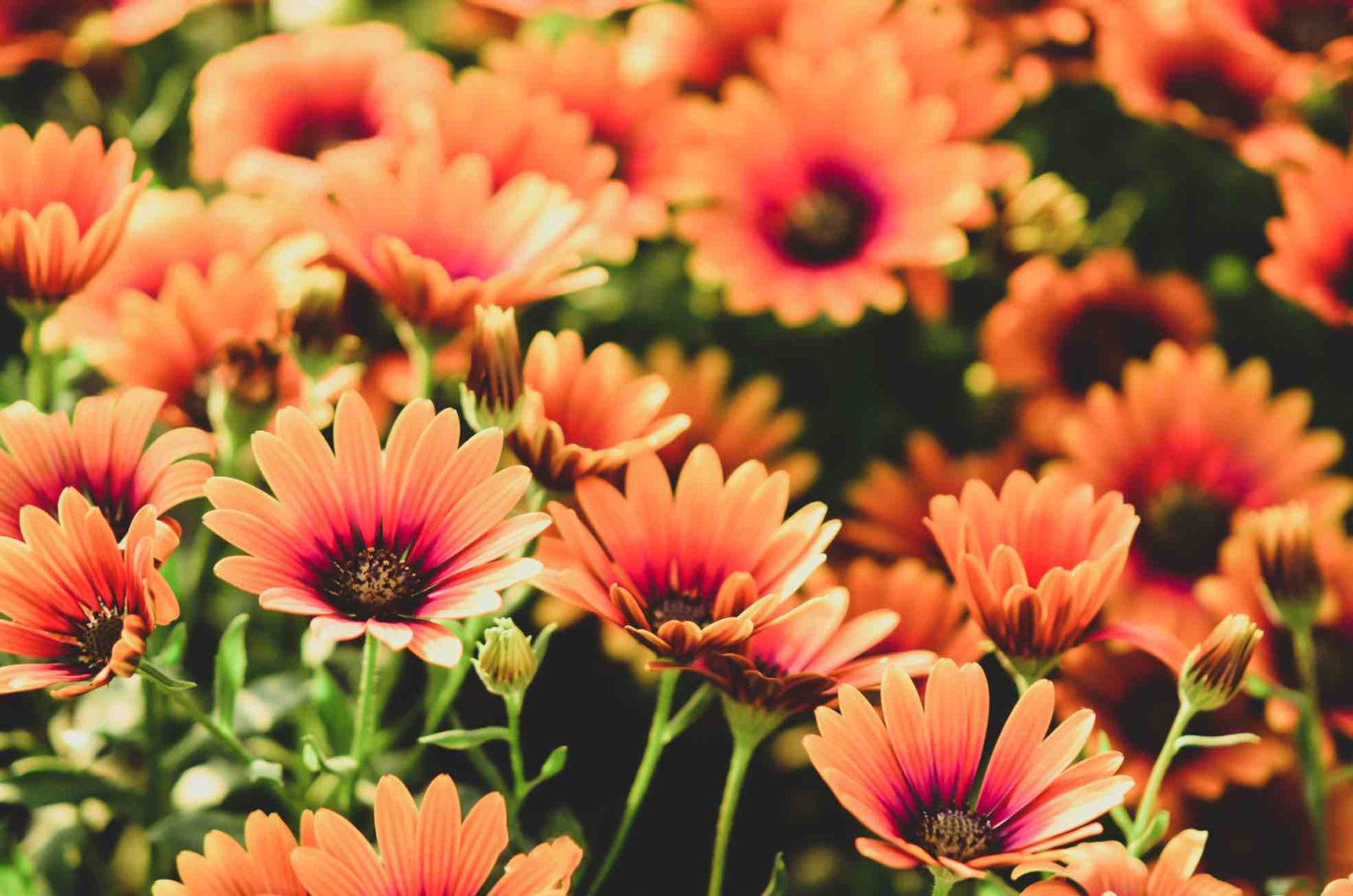
PERENNIALS > OSTEOSPERMUM > PROBLEMS
Reviewed By ROY NICOL

Roy is a Professional Gardener and Horticultural Consultant, specialising in large garden year-round maintenance and garden development. He is an RHS Master of Horticulture and uses his research in the application of no-dig methods in ornamental garden settings. Roy has been a Professional Gardener for more than six years and is a member of the Chartered Institute of Horticulture, Professional Gardener's Guild and Association of Professional Landscapers (Professional Gardener).
OSTEOSPERMUM GUIDES
Common Problems
Cuttings Propagation
Growing From Seed
Pruning
Varieties
Winter Care
The majority of osteospermum varieties are tender perennial evergreens and are usually grown as annuals in most regions of the UK.
These small plants’ simple, merry flowers, wide-open and disk-shaped, almost startle the observer with their refreshing innocence, especially the ones in white and pale tones which are exactly what very many varieties produce.
African Daisies in the main are pest-resistant and disease-free plants.
Only a handful of problems and issues affect them in most British climates and even these can be precluded under optimal growing conditions.
The four main issues that gardeners in the UK need to be aware of are outlined underneath.
- Aphid infestation
- Downy mildew
- Root rot
- Wilting and dieback
See guidelines for dealing with each of these common problems below.
1) Aphid Infestation
Aphids are tiny sap-sucking pests of which there are many sub-species but all of them have two attributes in common: they breed very rapidly and they can be destructive.
As terrifying as they may sound, aphids are not very difficult to control, especially if the infestation is detected early or before these pests have colonised your plants.
The first course of action is to tolerate aphids and allow the wildlife in your garden to control aphids, which are predated by ladybirds and blue tits among others.
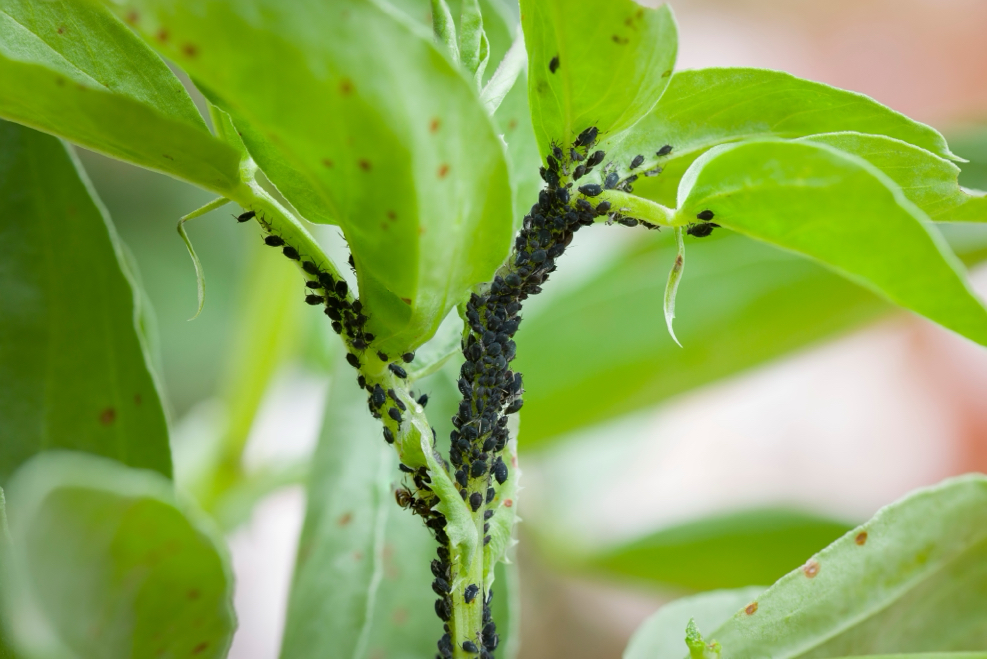
After all, they may not cause significant damage to affected plants.
The next best approach is to wipe aphids colonies off plants by hand.
If all else fails, organic pesticides containing natural pyrethrum or plant oils such as Rapeseed Oil can be used which are less likely to affect larger insects such as ladybirds.
For detailed information please see our gardening guide on aphids.
2) Downy Mildew
Downy Mildew is not exactly uncommon in rainy England.
This is because this air-bourne fungal disease that infects foliage thrives in wet weather and is promoted by damp foliage.
Downy Mildew, manifesting as unsightly discolourations and blotches on the upper leaf surface and obvious grey mould on the lower leaf surface, cannot be treated with consumer-class fungicides.
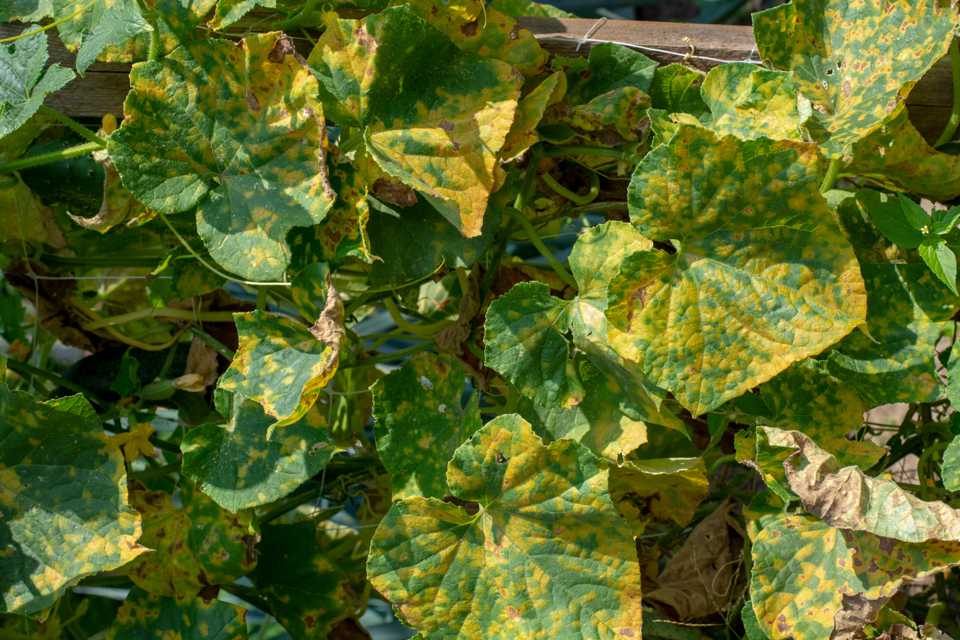
However, it seldom proves fatal and can be avoided with a bit of effort.
Head off downy mildew by watering at soil level or watering before 10am – preferably both!
Absolutely do not get the foliage wet in the evenings.
If an Osteospermum does get this disease, cut off and destroy the affected parts, keep the foliage dry at all times, and ensure that the plant has good air circulation and gets ample sunlight.
3) Root Rot
African daisies originated in the veldt of South Africa and they flourish in the light, sandy, and friable soils of their native habitat.
Also, the soil they grow in must drain very well and not be waterlogged.
Clayey soils, compacted soil, too much organic material, and damp ground, conversely, are not well tolerated by this plant.
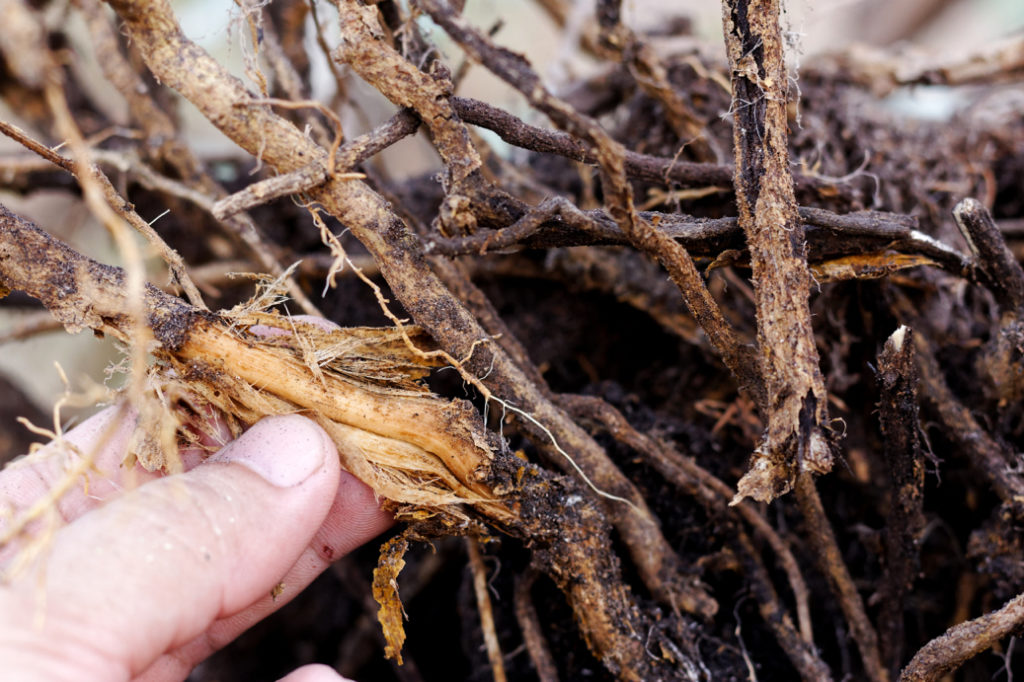
Such conditions may well bring about root rot, which is very difficult to spot, or even cause other, follow-on fungal diseases.
If your osteospermum shows signs of debilitation (stunted plants with low vigour and which wilt easily) and your soil is of the type described above, your plant may well have root rot.
“Affected plants can be identified by digging them up and washing the roots,” shares Master Horticulturist Roy Nicol.
“If they are dark coloured and soft, these parts can often be cut away and if sufficient white healthy roots remain the plant can be replanted in its favoured soil conditions described above.”
4) Wilting And Dieback
The wrong type of soil, overwatering, or consistently damp soil may cause, not only root rot, but, a serious disease which will manifest in African daisies as wilting and even dieback.
This disease is Verticillium wilt.
Though uncommon, it can and does affect African daisies.
Unfortunately, there is no consumer-class treatment for this soil-borne fungal disease that attacks the roots and then clogs up the plant arteries.
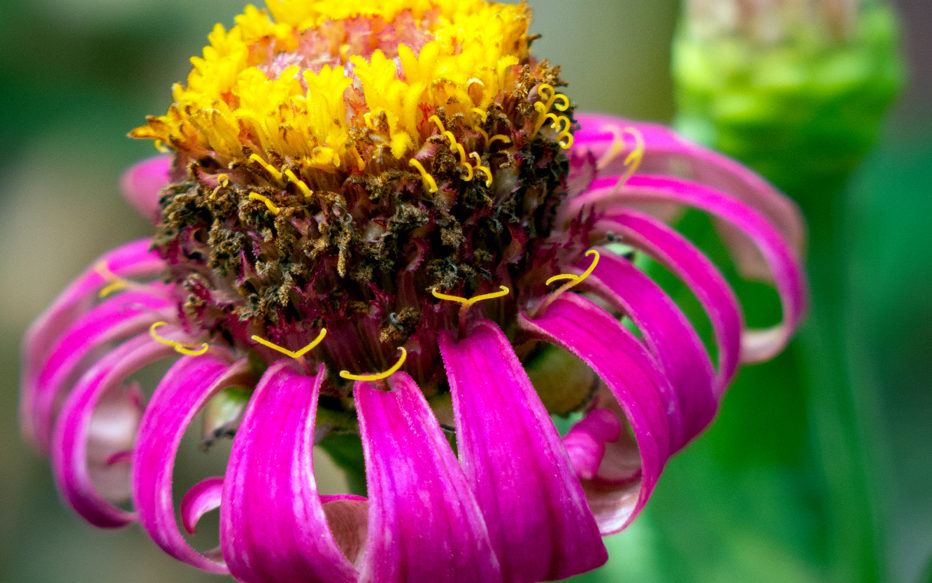
If Osteospermum plants have Verticillium wilt, they must, sadly, be uprooted and destroyed.
“Care should be taken not to spread infected soil around the area or on tools,” adds Roy.
“Plants affected by this fungus can be identified by cutting a section of a woody stem and checking if a circle or part-circle of brown marks are visible, this is the die-back of the water-carrying vessels (xylem) in the plant.”
Plants susceptible to this disease should not be grown in soil known to be infected with the Verticillium fungus.

